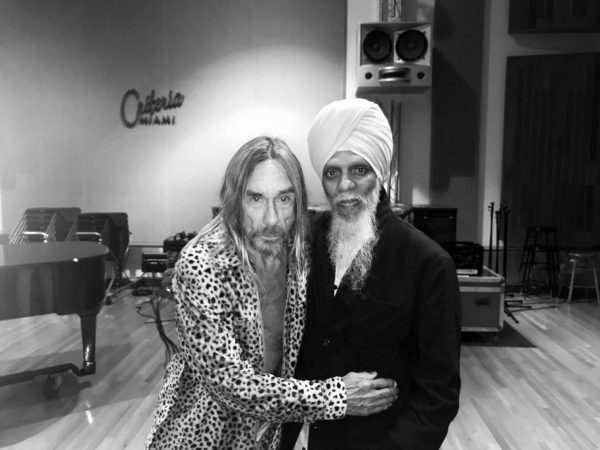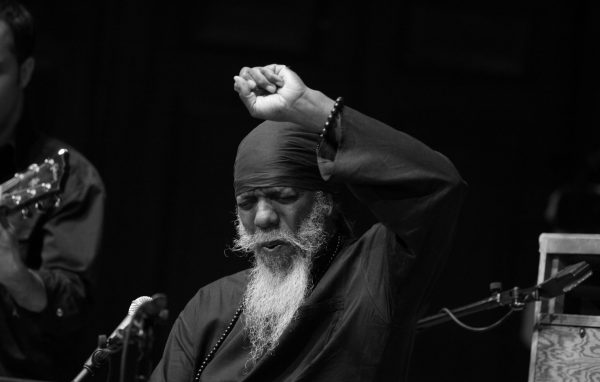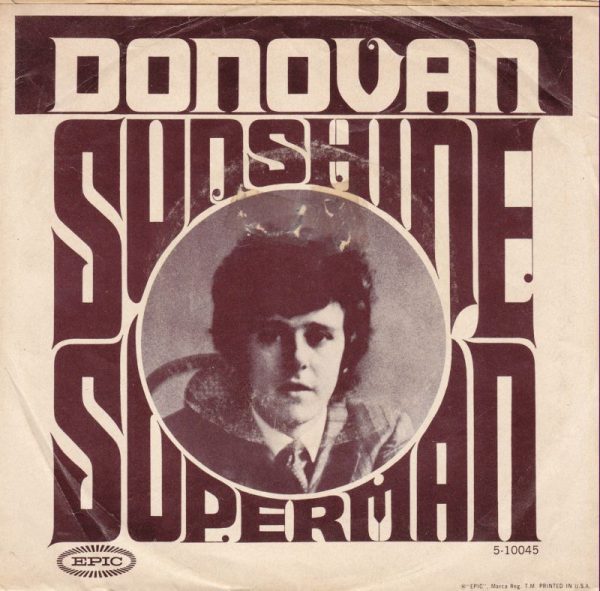How Lonnie Smith Grooved with Iggy Pop…and Donovan
This past Saturday The New York Times published a terrific story on soul-jazz organist Dr. Lonnie Smith’s new album Breathe on Blue Note Records. The ‘punk frontman’ Iggy Pop covered two songs on the album including Donovan’s #1 hit song “Sunshine Superman.” What a strong groove it is. The NY Times called the album “joyous and intimate.” Here is that story, along with a link to a conversation between Iggy Pop and the album’s producer, the legendary Don Was. It is a terrific conversation about the album, and Iggy and Don are in great form. Don’t miss it!!
This morning, Donovan sent me a wonderful comment on the album and Iggy and Lonnie’s version of Sunshine Superman, written for his muse and wife Linda! Here it is:
“I love this version of my song by Dr. Lonnie and Iggy singing, produced by Don Was. I wrote to all three to tell them I am honoured and so pleased. My Sunshine Super-Girl Linda loves it too, the song was composed for Linda. I particularly love the Congas. Iggy tells me it’s Venezuelan percussionist Richard Bravo. Well done Dr. Lonnie, Iggy & Don Was, the Jazz style and the video is Brill!”
Donovan & Linda

How Lonnie Smith Found an Unlikely New Collaborator: Iggy Pop
The soul-jazz organist and the punk frontman worked together on a pair of covers and discovered a musical kinship.

By Brad Farberman
March 24, 2021
In 2018, Iggy Pop was recording a pair of covers for an upcoming album by the soul-jazz pioneer Dr. Lonnie Smith. At first, the punk icon couldn’t quite find the groove, said the guitarist Jonathan Kreisberg, who was in the studio that day. Then something clicked.
“Suddenly, in the middle of the take, it just started sounding really in the pocket, and had all this energy,” Kreisberg recalled. “I turned my head over and looked through the control room glass, to the room he was in, and he had taken off his shirt. He had become Iggy Pop.”
Pop’s covers of Donovan’s “Sunshine Superman” and Timmy Thomas’s “Why Can’t We Live Together” will appear on Smith’s joyous, intimate “Breathe,” due Friday on Blue Note Records. The rest of the album, which includes a four-piece horn section, guest vocals from Alicia Olatuja and a reconfigured Thelonious Monk tune, comes from a week of 2017 gigs at New York’s now-shuttered Jazz Standard, a run that doubled as a 75th birthday party for “Doc.”
As he nears 80, Smith is merely doing what he’s always done: collaborating, arranging and playing organ with an understated virtuosity that prizes feeling over flash. Not a lot has changed since he released his first album, “Finger-Lickin’ Good Soul Organ,” in 1967. But new listeners — including one very high-profile rock star — are still finding Smith. And his organ hasn’t lost an ounce of soul.
Originally from Buffalo, N.Y., Smith started on organ when a local instrument shop owner gave him a Hammond B3. The music of Jimmy Smith and Bill Doggett found him at the same time.
“I just loved the sound” of the instrument, said Smith, who currently resides in Fort Lauderdale, Fla., in a phone interview. “It’s an orchestra. It’s a bass. And it’s a soloist. I mean, you got everything right there.”

Smith moved to New York City in the mid-60s and began recording on albums by the guitarist George Benson and the saxophonist Lou Donaldson. His LP with Donaldson — most notably “Alligator Bogaloo” from 1967 and “Everything I Play Is Funky” three years later — became part of the foundation of soul-jazz, an ecstatic, organ-heavy subgenre that fused jazz with funk and R&B. Even with an abundance of fine organists on the scene in the ’60s — Smith’s contemporaries included Shirley Scott, Richard “Groove” Holmes, Reuben Wilson and Jimmy McGriff — Benson and Donaldson chose Smith. They still keep in touch; Donaldson visits and Benson had called two days before this interview.
“I liked the feel, and they must have liked the feel also,” Smith said. “I’m guessing. We had a ball when we played. You feel at home when you play with certain people. And that’s a great thing. Because everybody sound good, but they don’t feel good. Or they don’t play well together. That’s the thing about music.”
Around this time, Smith began recording his own albums, too, including a quartet of classic releases for Blue Note between 1969 and 1970: “Turning Point,” “Think!,” “Drives” and “Move Your Hand.” (Smith left the label in 1970 and returned in 2016.) His take on Blood, Sweat & Tears’ “Spinning Wheel” was sampled by A Tribe Called Quest in 1990, and more recently, the title track from “Move Your Hand” became a favorite of Pop’s.
“I was listening to ‘Move Your Hand’ over and over at my family home in Florida, and the neighbor across the canal has cockatoos,” Pop said. “I was playing Barry White that day,” and the birds were quiet. “But when I played ‘Move Your Hand,’ they started screaming.” He laughed.
The collaboration between Smith and Pop arose naturally — Pop went to a Smith gig and they started talking. Later, Pop suggested the covers. He had been a fan of “Why Can’t We Live Together,” famously sampled by Drake on “Hotline Bling,” since its 1972 release. And Smith had previously covered “Sunshine Superman” on “Move Your Hand”
“I like the way he sounded,” Smith said of Pop’s performances on his album. “Natural. You know when people try to overdo it? Again? You don’t have to do that. He just did what he did.”
Pop, who turns 74 next month, had collaborated with artists on the fringes of jazz before, like the bassist and producer Bill Laswell, but never with an artist so rooted in the tradition. And true to jazz form, there was essentially no rehearsal.
“I’d never done a proper jazz session before, so I was, you might say, on my best behavior,” Pop said with a laugh. “And, you know, we do that, and then I’d watch him, and that was about it. With each one. We didn’t really talk out the arrangement as much as just watch him for cues.”
“Breathe” is technically the second time that Smith and Pop have worked together. At the show where they first met, Smith at one point picked up his DLS Electric Walking Stick, a cane and percussion instrument made by the Slaperoo company. Pop played it that night, too, and a bond was formed over the unlikeliest of instruments.
“I was playing it through the audience, and he was over there, and I let him play it,” Smith said. “And we decided to do it. Do it together. And it worked. It worked.”

Listening to only a few bars drove me to get the CD. Who copuld imagine Dr. Lonnie Liston Smith and Iggy Pop–the sound is beautifully healing. Thanks.